Evolutionary Ecology
The department of Evolutionary Ecology gathers complementary skills in behavioural ecology, population dynamics, population biology, community ecology, and methodology (statistics and modelling). The research done in the department aims at studying how animal species evolve in a changing world by understanding the causes of the evolution of traits, adaptations and interactions. For that, we consider different levels of organization from individuals to populations and communities. Because organisms cannot be considered isolated from other biotic factors, we consider pathogens but also competing species within communities.
We study how individuals adapt to their environments that are largely impacted by anthropic pressures, and how life history traits and behaviour evolve in response to these pressures. Although we mainly focus on phenotype, we more and more consider the mechanistic link between the genotype and the phenotype. We develop the theoretical framework of our discipline through a conceptual and modeling approach. In parallel, we test hypotheses that arise from theoretical predictions through experimental, comparative and observational approaches on different biological models (insects, birds, mammals). Experimental approaches are developed in the laboratory (insect model) and in natura (bird, insect and mammal models). Observational and comparative research is mainly concerned with vertebrates. Our approaches are also, and increasingly, interested in the mechanisms of adaptive responses. In addition to the classical approaches of demographic analysis and trait change, methods of ecophysiology, chemical ecology and molecular biology are used.
Our department hosts several long-term studies of wild populations of different species. These long-term studies offer a valuable way to understand how biotic and abiotic factors affect individuals’ life history traits, and the functioning of populations in natura. Five populations of mammalian species are thus monitored for several years (more than 40 years on roe deer, 30 on Alpine marmots, 25 years on cats, 16 years on zebras, and 20 years on impala). Two of our study sites (La Sassière in Vanoise National Park (Alpine marmots) and Hwange National Park) have been certified as “Site d’Etude en Ecologie Globale” (SEEG), and two (ZA “Hwange” and ZA “Antarctic and sub-Antarctic”) were certified as “Zone Atelier” by the CNRS.
The department of Evolutionary ecology is also largely involved in training activities. Lastly, we also have strong socio-economic relationships. Indeed, because we address questions of major societal interest (global warming, public health) we tightly collaborate with socio-economic partners (Office Français de la Biodiversité, Vanoise National Park, Hwange National Park in Zimbabwe, Office National des Forêts, etc.) and participate to general public and media events.
Publications
Display of 2161 to 2190 publications on 2449 in total
Internal correspondence analysis of codon and amino-acid usage in thermophilic bacteria
Journal of Applied Genetics . 44 : 235-261
Journal article
see the publicationConspecific avoidance during foraging in Venturia canescens (Hymenoptera: Ichneumonidae): the roles of host presence and conspecific densities
Journal of Insect Behavior . 16 : 307-318
Journal article
see the publicationDispersal between host populations in field conditions: navigation rules in the parasitoid Venturia canescens
Ecological Entomology . 28 : 257-267
Journal article
see the publicationAge and density modify the effects of habitat quality on survival and movements of roe deer
Ecology . 84 ( 12 ) : 3307-3316
Journal article
see the publicationVariability in diapause duration in the chestnut weevil: mixed ESS genetic polymorphism or bet-hedging?
Oikos . 100 : 574-580
Journal article
see the publicationDispersal pattern of domestic cats (Felis catus) in a promiscuous urban population: do females disperse or die?
Journal of Animal Ecology . 72 : 203-211
Journal article
see the publicationDisease propagation in connected host populations with density-dependent dynamics: the case of the Feline Leukemia Virus
Journal of Theoretical Biology . 223 ( 4 ) : 465-475
Journal article
see the publicationGenetic and behavioural estimates of reproductive skew in male fallow deer
Molecular Ecology . 12 : 2793-2800
Journal article
see the publicationEvolutionary systematics of the Indian mouse Mus famulusBonhote, 1898: molecular (DNA/DNA hybridization and 12S rRNA sequences) and morphological evidence
Zoological Journal of the Linnean Society . 137 ( 3 ) : 385-401
Journal article
see the publicationAdaptive latitudinal trends in the mandible shape of Apodemus wood mice
Biogeography . 30 : 1617-1628
Journal article
see the publicationHabitat tracking as a response of the planktic foraminifer Globorotalia truncatulinoides to environmental fluctuations during the last 140 kyr
Marine Micropaleontology . 49 : 97-122
Journal article
see the publicationResponse of planktic foraminiferal size to late Quaternary climate change
Paleoceanography . 18 : 1-12
Journal article
see the publicationClutch size reduction as a response to increased nest predation rate in the collared flycatcher
Ecology . 84 : 2582-2588
Journal article
see the publicationProcustean co-inertia analysis for the linking of multivariate datasets
Ecoscience . 10 : 110-119
Journal article
see the publicationCo-inertia analysis and the linking of ecological tables
Ecology . 84 ( 11 ) : 3078-3089
DOI: 10.1890/03-0178
Journal article
see the publicationln vitro effect of essential oils from Cinnamomum Aromaticum Citrus limon and Allium sativum on two intestinal flagellates of poultry Tetratrichomonas gallinarum and Histomonas meleagridis
Parasite . 10 : 153-157
Journal article
see the publicationLa faune sauvage indicateur possible du risque de maladie émergente.
Epidémiologie et Santé Animale . 44 : 21-31
Journal article
see the publicationDoes a deletion in a virus-like particle protein pleiotropic have effects on the reproductive biology of a parasitoid wasp?
Journal of Insect Physiology . 49 : 1183-1188
Journal article
see the publicationPhenotypic plasticity of sternopleural bristle number in temperate and tropical populations of Drosophila melanogaster
Genetical Research . 81 : 25-32
Journal article
see the publicationComparing and classifying one-dimensional spatial patterns: an application to laser altimeter profiles
Remote Sensing of Environment . 85 ( 4 ) : 453-462
Journal article
see the publicationLes étudiants en première année à l`Université des Sciences : innover pour motiver
20ème Congrès AIPU (Association Internationale de Pédagogie Universitaire) . : 157-165
Conference paper
see the publicationEcotoxicology and spatial modeling in population dynamics: an illustration with brown trout
Environmental Toxicology and Chemistry . 22 : 958-969
Journal article
see the publicationDo migratory or demographic disruptions rule the population impact of pollution in spatial networks?
Theoretical Population Biology . 64 : 473-480
Journal article
see the publicationUn site web pour l'enseignement interdisciplinaire des mathématiques en biologie
EIAH 2003 (Environnements Informatiques pour l'Apprentissage Humain) . : 8 pages
Conference paper
see the publicationPolarisation of prokaryotic chromosomes
Current Opinion in Microbiology . 6 : 101-108
Journal article
see the publicationEnergy dynamics in a parasitoid foraging in the wild
Journal of Animal Ecology . 72 ( 4 ) : 691-697
Journal article
see the publicationEnergy dynamics in a parasitoid foraging in the wild
Journal of Animal Ecology . 72 : 691-697
Journal article
see the publicationDispersal between host populations in field conditions: navigation rules in the parasitoid Venturia canescens
Ecological Entomology . 28 : 257-267
Journal article
see the publicationEffects of hurricane lothar on the population dynamics of european roe deer
Journal of Wildlife Management . 67 ( 4 ) : 767-773
Journal article
see the publicationSpatial variation in springtime food resources influences the winter body mass of roe deer fawns
Oecologia . 137 : 363-369
Journal article
see the publication
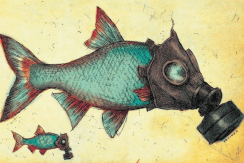
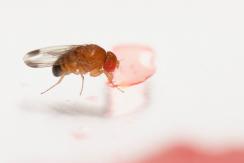
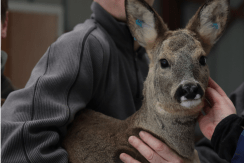
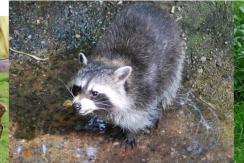
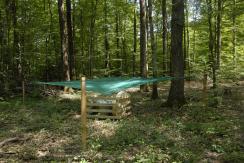
You also, comment on this article